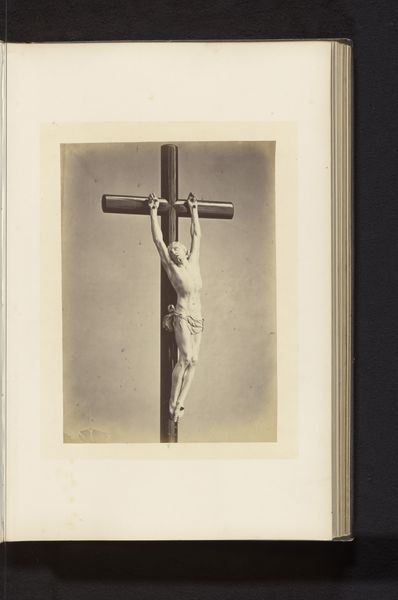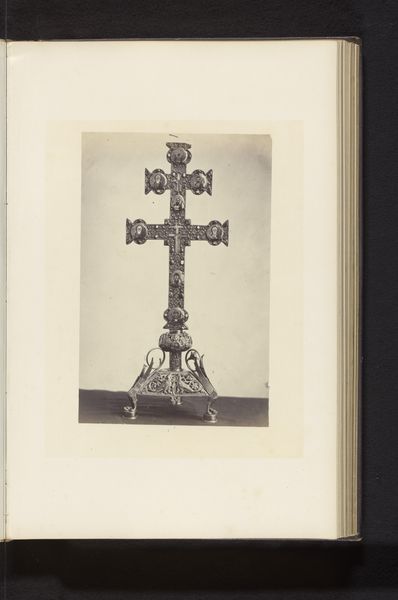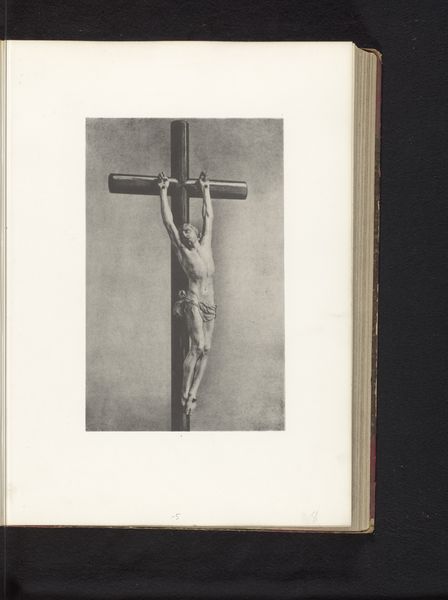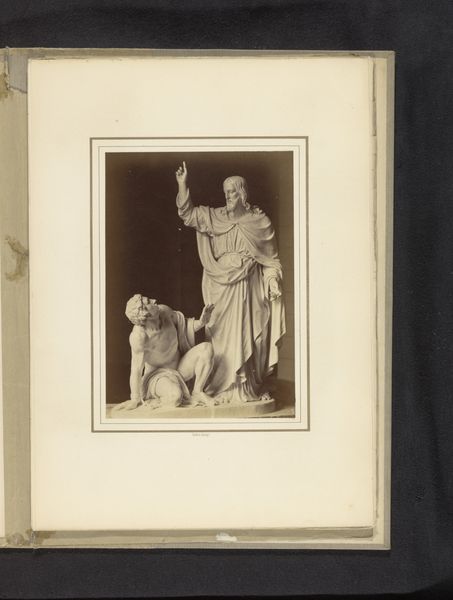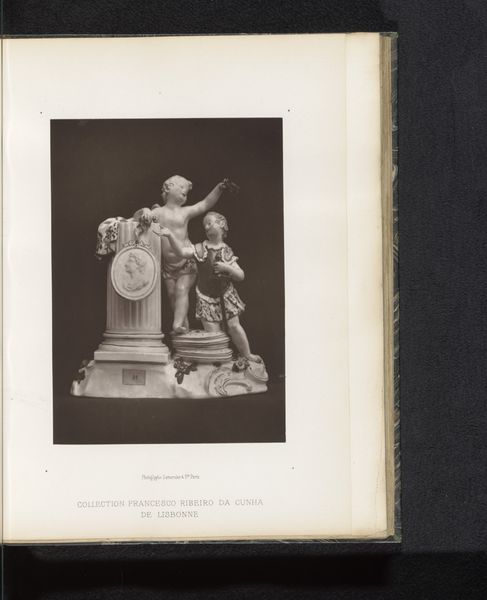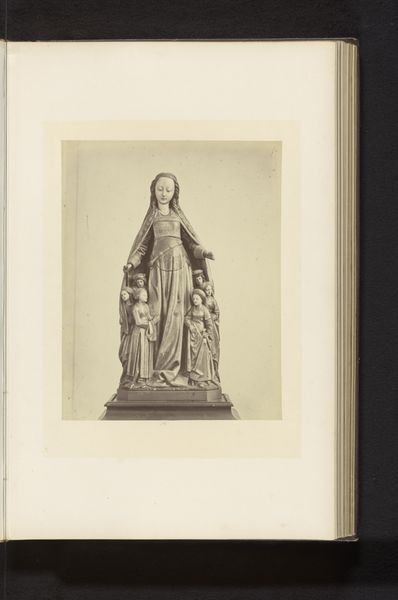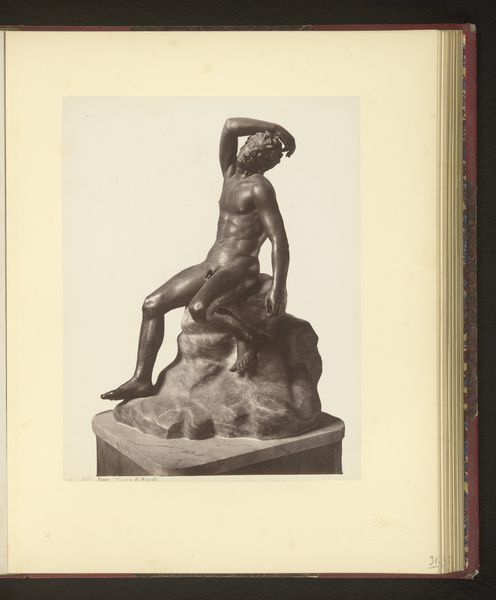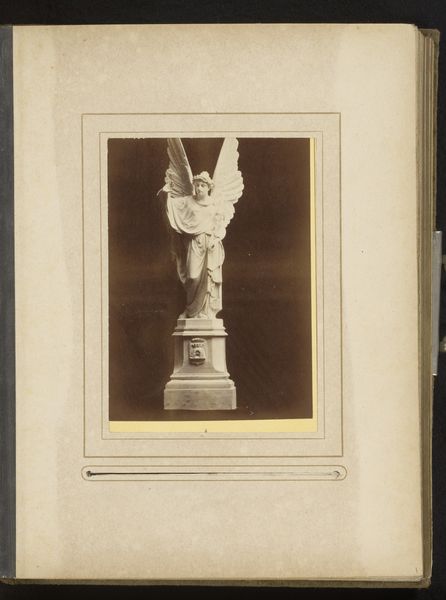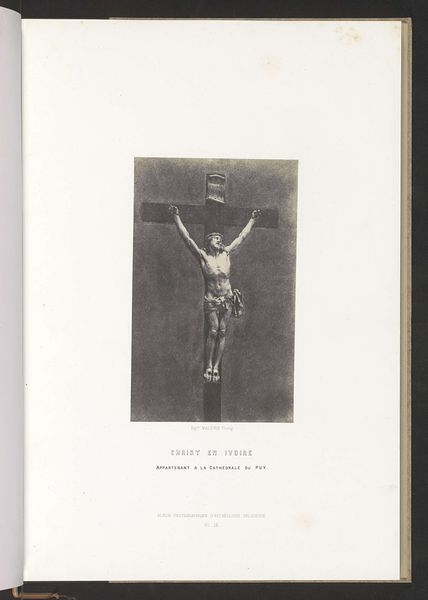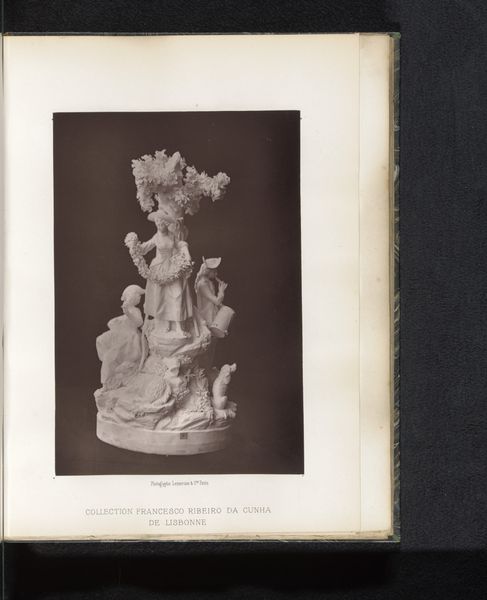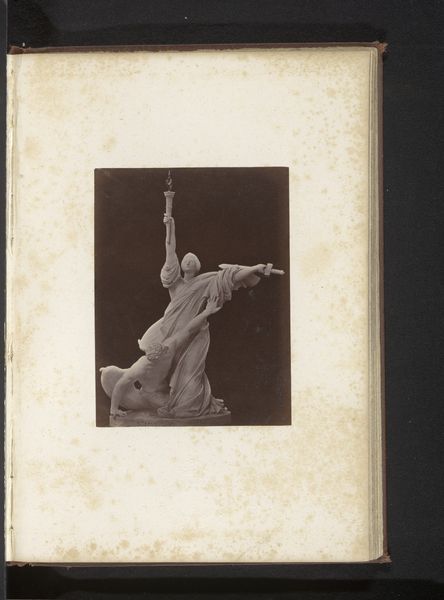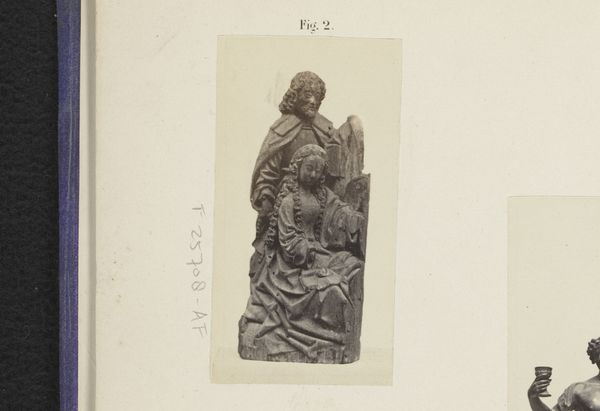
Crucifix van palmhout uit de collectie van C.J. Vervloet in Brussel, opgesteld op een tentoonstelling over religieuze objecten uit de middeleeuwen en renaissance in 1864 in Mechelen 1864
0:00
0:00
sculpture, wood
#
medieval
#
narrative-art
#
figuration
#
sculpture
#
wood
#
realism
Dimensions: height 251 mm, width 153 mm
Copyright: Rijks Museum: Open Domain
Curator: This compelling photograph documents a palm wood crucifix, part of C.J. Vervloet’s collection, showcased at an 1864 exhibition of religious objects in Mechelen. Editor: It's strikingly austere, even in this monochrome print. The carved figure of Christ is so slender and elongated. It conveys a sense of profound suffering. The added kneeling figure adds another layer of depth, but I'm immediately struck by a sense of… humility and perhaps desperation. Curator: The placement of this piece within a public exhibition on religious objects underscores the shifting role of such imagery. The mid-19th century was a time of immense societal change. To publicly display these previously private, or at least church-held, icons signals a reevaluation of their significance. Who is permitted to display them? How should this sculpture be viewed and contextualized by the masses? These questions come up for me. Editor: I agree. The presentation and consumption of religious artifacts took on new meanings as devotional art was placed within public discourse. We're invited, then, to consider this in light of burgeoning religious studies. Does the artistic rendering serve its original devotional intention, or something else entirely in this context? What meaning does it then convey when re-situated as historical object in this setting? Curator: Exactly. And the photographic medium itself adds another layer. This photograph, now preserved digitally, distances us further from the original intent, allowing the artwork to have an afterlife of interpretations shaped by prevailing beliefs around religion, history, politics, and even our current moment. Editor: Right. The lens mediates the experience. Yet, through this specific documentation of a historical object we may begin considering religious iconographies and how these visual components perpetuate larger social attitudes about power, subservience, and faith within any given context, now. The impact resonates today as much as it may have in 1864. Curator: It's a powerful reminder of the multiple layers of interpretation embedded within a single artwork and their continued relevancy when examining contemporary art now. Editor: Indeed. Examining this exhibition as it existed can assist us in discerning evolving perceptions around cultural history and its connection to political ideology, while reflecting on its continued symbolic significance for us today.
Comments
No comments
Be the first to comment and join the conversation on the ultimate creative platform.

